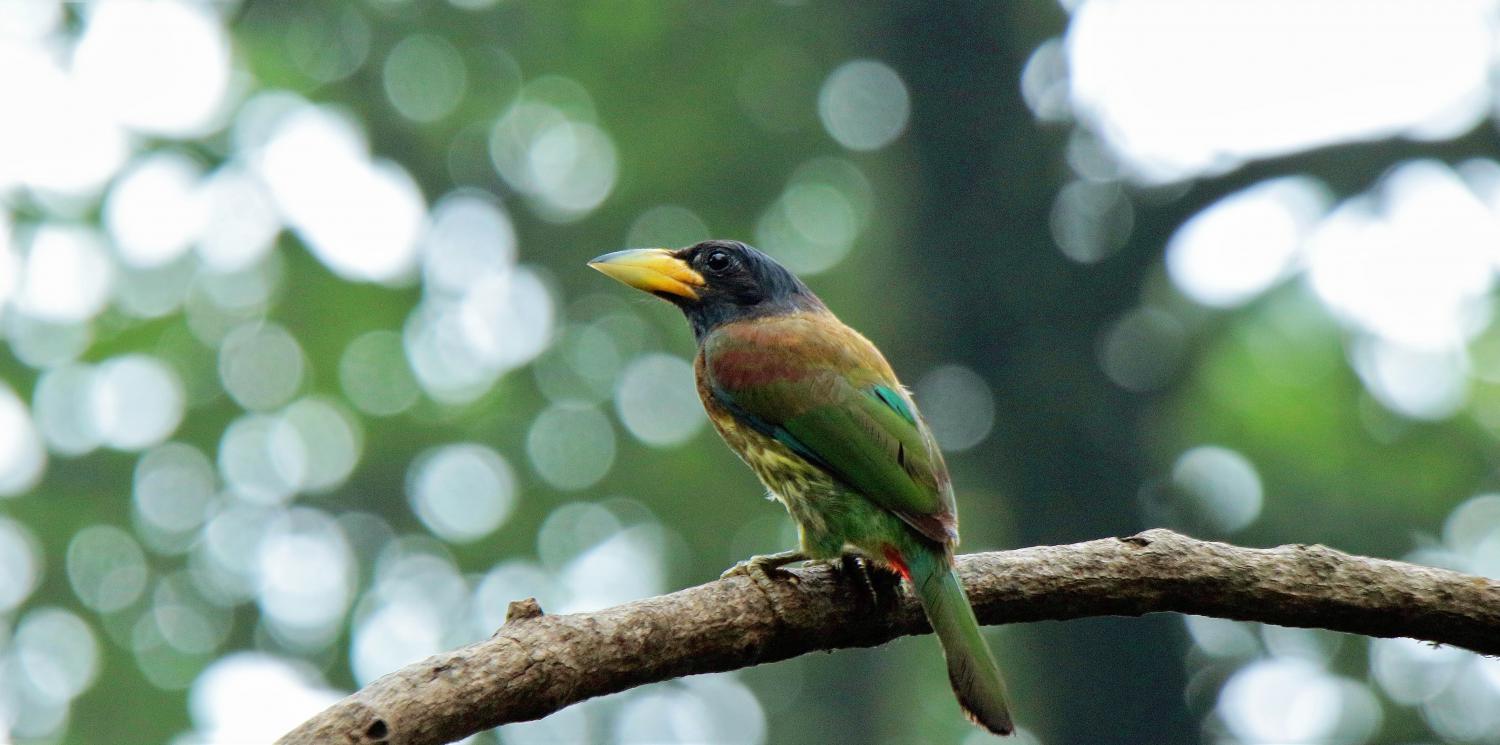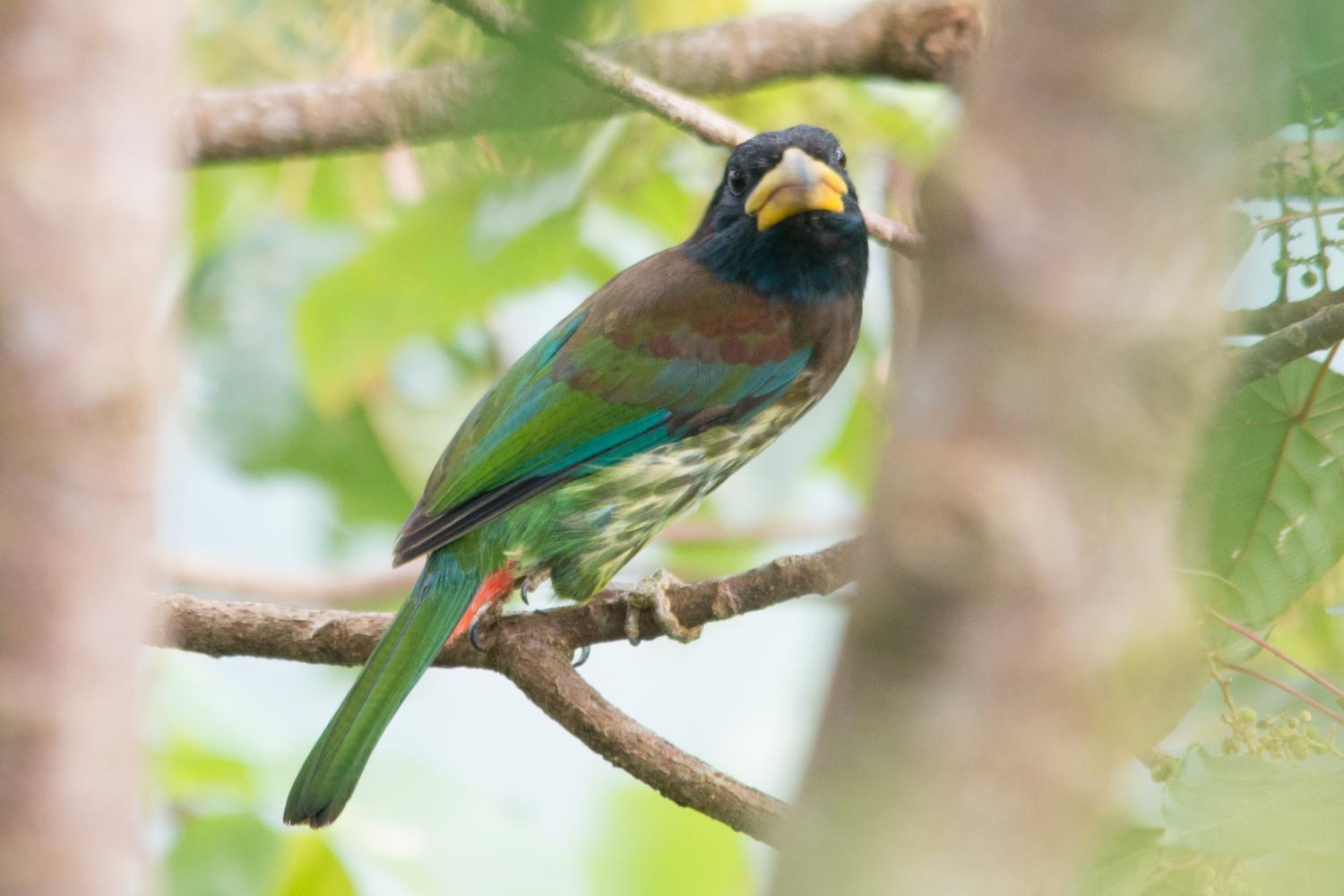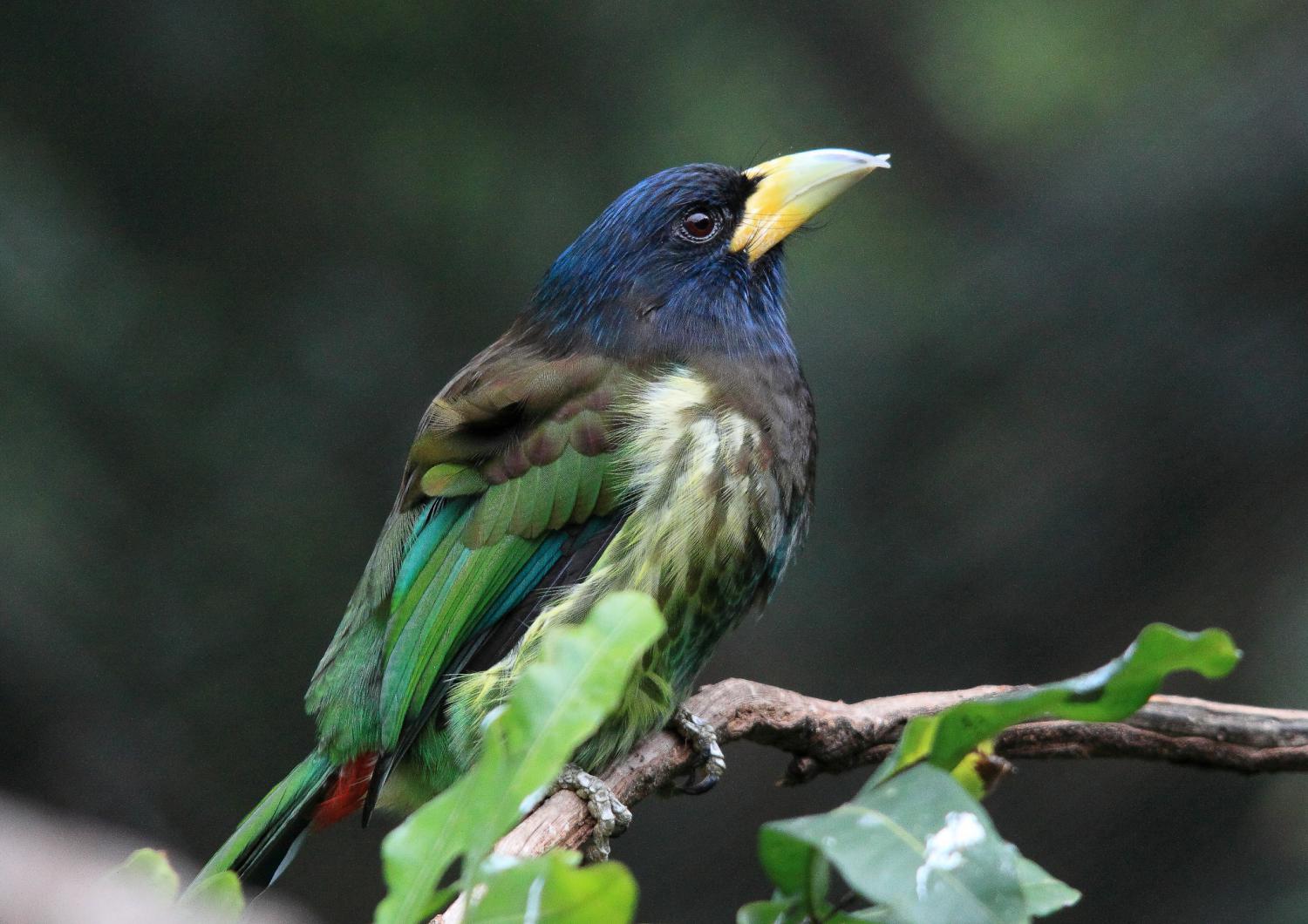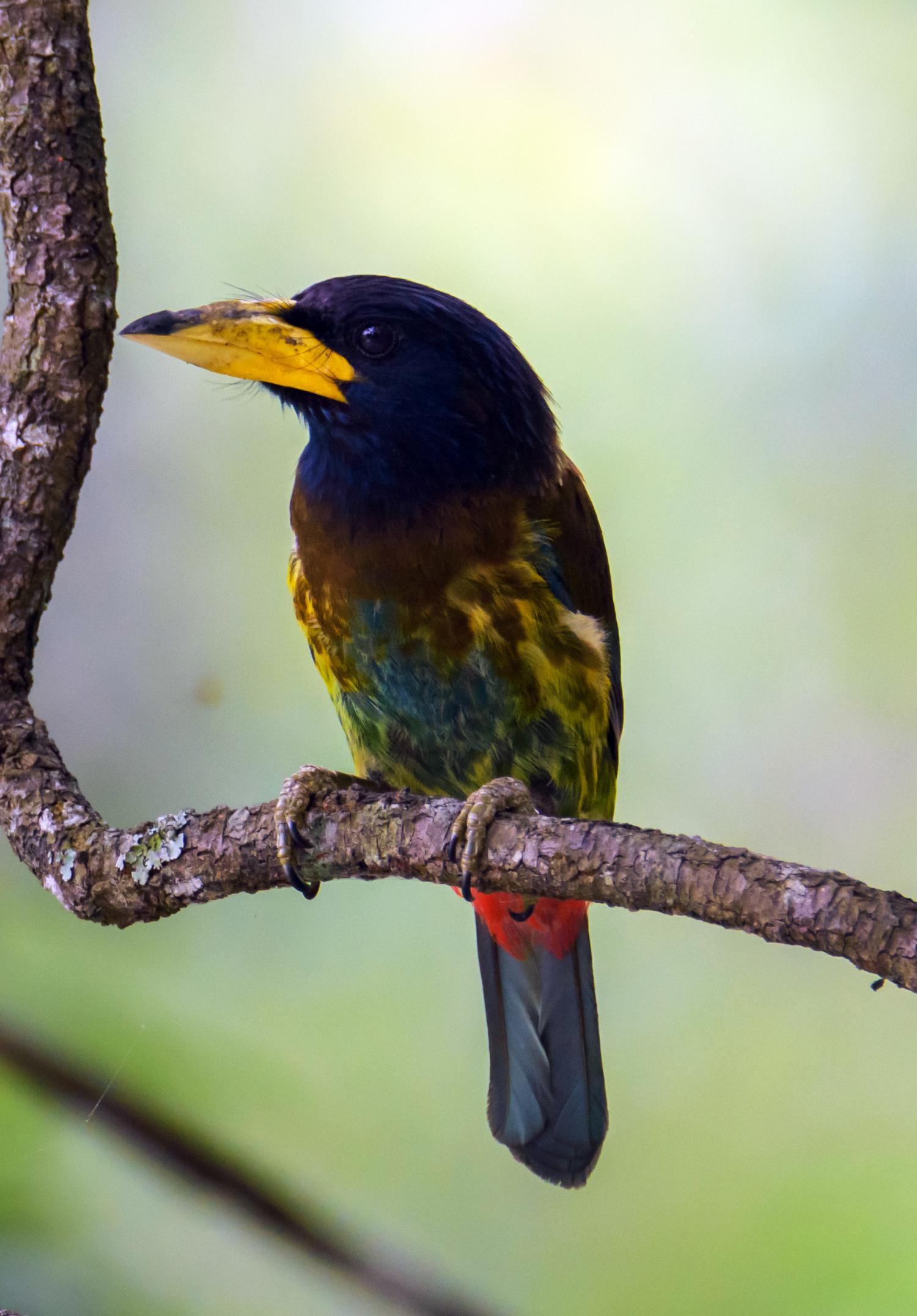Species of Thailand
Great barbet
Psilopogon virens
Pieter Boddaert, 1783
In Thai: นกตั้งล้อ
The great barbet (Psilopogon virens) is an Asian barbet native to the Indian sub-continent and Southeast Asia, where it inhabits foremost forests up to 3000 m altitude. It has been listed as Least Concern on the IUCN Red List since 2004 because of its wide distribution.
Taxonomy
Bucco virens was the scientific name proposed by Pieter Boddaert in 1783 for a great barbet that had been described by Georges-Louis Leclerc, Comte de Buffon in 1781 based on a specimen collected in China. It was illustrated in a hand-coloured plate engraved by François-Nicolas Martinet.
It was placed in the genus Megalaima proposed by George Robert Gray in 1842 who suggested to use this name instead of Bucco. In the 19th and 20th centuries, the following great barbet zoological specimens were described:
- Megalaema marshallorum proposed by Robert Swinhoe in 1870 was based on a great barbet from the Himalayas.
- Megalaima virens magnifica proposed by E. C. Stuart Baker in 1926 was a male barbet from Machi, Manipur.
- Megalaima virens clamator proposed by Ernst Mayr in 1941 was a bird collected in northern Myanmar.
Molecular phylogenetic research of barbets revealed that the birds in the genus Megalaima form a clade, which also includes the fire-tufted barbet, the only species placed in the genus Psilopogon at the time. Barbets formerly placed in this genus were therefore reclassified under the genus Psilopogon.
Four great barbet subspecies are recognised as of 2014:
- P. v. virens occurs from central Myanmar, Thailand to Vietnam and China
- P. v. marshallorum occurs from northeastern Pakistan to western Nepal
- P. v. magnificus occurs from eastern Nepal to Assam
- P. v. clamator occurs from Assam and northern Myanmar to northern Thailand and Yunnan in China
Results of a phylogenetic study of Asian barbets indicate that the great barbet is most closely related to the red-vented barbet (P. lagrandieri) occurring in Cambodia, Laos and Vietnam.
Description
The great barbet has a blue head, large yellow bill, brown and green-streaked body, belly and a red vent. The plumage is green. It is the largest barbet species with a body length of 32 – 35 cm and a weight of 192 - 295 g.
Distribution and habitat
The great barbet is a resident breeder in the lower-to-middle altitudes of the Himalayas, ranging across northern India, Nepal and Bhutan, Bangladesh and some parts of Southeast Asia, as far away as Laos.
Behaviour and ecology
The great barbet's nesting season is from April to July. It typically builds nests in tree holes. Both male and females take care of the young. Its diet consists mainly of fruits and insects.
The male's territorial call is a very loud kay-oh. The alarm is a harsh keeab, and another call is a repetitive piou-piou-piou-piou.
This article uses material from Wikipedia released under the Creative Commons Attribution-Share-Alike Licence 3.0. Eventual photos shown in this page may or may not be from Wikipedia, please see the license details for photos in photo by-lines.
Category / Seasonal Status
BCST Category: Recorded in an apparently wild state within the last 50 years
BCST Seasonal status: Resident or presumed resident
Scientific classification
- Kingdom
- Animalia
- Phylum
- Chordata
- Class
- Aves
- Order
- Piciformes
- Family
- Megalaimidae
- Genus
- Psilopogon
- Species
- Psilopogon virens
Common names
- Thai: นกตั้งล้อ
Synonyms
- Megalaima virens
Conservation status

Least Concern (IUCN3.1)
Photos
Please help us review the bird photos if wrong ones are used. We can be reached via our contact us page.
Range Map

- Chae Son National Park
- Chiang Dao District, Chiang Mai
- Chiang Dao Wildlife Sanctuary
- Chiang Khong District, Chiang Rai
- Doi Chong National Park
- Doi Inthanon National Park
- Doi Lang
- Doi Pha Hom Pok National Park
- Doi Phu Kha National Park
- Doi Suthep - Pui National Park
- Fang District, Chiang Mai
- Huai Kha Khaeng Wildlife Sanctuary
- Huai Nam Dang National Park
- Kaeng Krachan National Park
- Khon San District, Chaiyaphum
- Khun Chae National Park
- Mae Fa Luang District, Chiang Rai
- Mae Moei National Park
- Mae Ping National Park
- Mae Taeng District, Chiang Mai
- Mae Wong National Park
- Mueang Chiang Mai District, Chiang Mai
- Nam Nao National Park
- Nanthaburi National Park
- Omkoi Wildlife Sanctuary
- Pha Daeng National Park
- Phu Chi Fa Forest Park
- Phu Hin Rong Kla National Park
- Phu Khiao Wildlife Sanctuary
- Phu Kradueng National Park
- Phu Luang Wildlife Sanctuary
- Phu Soi Dao National Park
- Phu Suan Sai National Park
- Taksin Maharat National Park
- Tat Mok National Park
- Tham Sakoen National Park
- Thong Pha Phum National Park
- Thung Yai Naresuan Wildlife Sanctuary
- Umphang Wildlife Sanctuary




